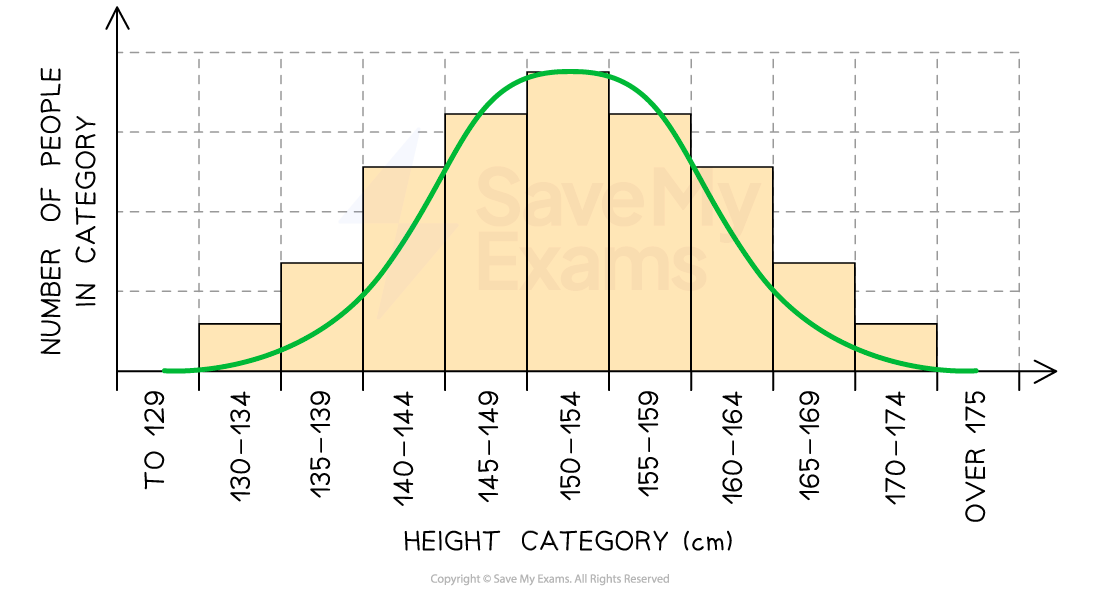Types of Variation (WJEC GCSE Biology): Revision Note
Exam code: 3400
Types of Variation
Higher Tier Only
Phenotypic variation can be divided into two types depending on how you are able to group the measurements:
Continuous Variation is when there are very many small degrees of difference for a particular characteristic between individuals and they are arranged in order and can usually be measured on a scale
Examples include height, mass, finger length etc. where there can be many ‘in-between’ groups
Discontinuous Variation is when there are distinct differences for a characteristic
For example, people are either blood group A, B, AB or O; are either male or female; can either roll their tongue or not - there are no ‘in-betweens’
When graphs of these data are plotted, continuous variation gives smooth bell curves (a result of all the small degrees of difference), whereas discontinuous gives a ‘step-like’ shape due to the discrete groups
Continuous variation graph

Height is an example of continuous variation which gives rise to a smooth bell-shaped curve when plotted as a graph
Discontinuous variation graph

Blood group is an example of discontinuous variation which gives rise to a step-shaped graph

Unlock more, it's free!
Did this page help you?